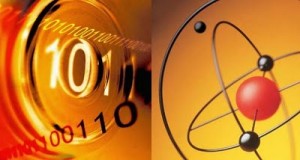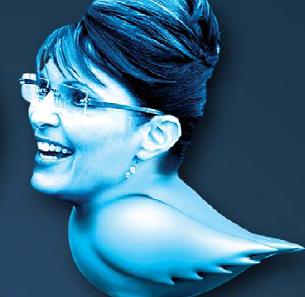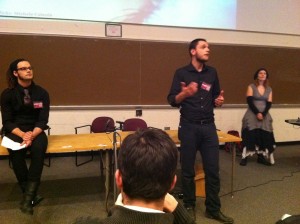Yesterday, Sang-Hyoun Pahk delivered a critique of the usage of the term augmented reality on this blog. First, thank you, criticism of this term is especially important for me (and others) because augmented reality is the fundamental unit of analysis about which I seek to describe. A quick catch-up: I initially laid out the idea of augmented reality here; expounded on its opposite, what I call digital dualism, here; and fellow Cyborgology editor PJ takes on the terms here. PJ Rey and I use the term augmented reality on this blog to describe the digital and physical worlds not as separate but instead as highly enmeshed together. And Sang is pushing us to further elaborate on what this all means.
I’ll tackle Sang’s second critique first because I think it is most important. The confusion comes from how two points hang together: (1) the digital and physical have enmeshed and (2) the digital and physical have important differences. Sang seems to be arguing that we cannot have it both ways, but I have and will continue maintain that we can.
Sang takes issue with PJ and I’s statements that the offline and online are mutually constitutive, which seems to “abolish the difference” between the two. I actually think we all agree here and perhaps PJ and I could have been clearer: the two are mutually constitutive, just not fully mutually constitutive. Let me offer new wording: atoms and bits have different properties, influence each other, and together create reality. more...


 ok so i have a few complaints about the use of “augmented reality.” the first is primarily semantic. it seems (to me at least) like the term it implies some kind of (pre-digital?) “non-augmented” reality. this is more or less explicit when we refer to things like “
ok so i have a few complaints about the use of “augmented reality.” the first is primarily semantic. it seems (to me at least) like the term it implies some kind of (pre-digital?) “non-augmented” reality. this is more or less explicit when we refer to things like “


 I want to reflect on Theorizing the Web 2011 by asking for a discussion about what academic conferences should look like. In fact, let’s forget the term “conference” for a moment and ask how thinkers should best organize to discuss intellectual work in public?
I want to reflect on Theorizing the Web 2011 by asking for a discussion about what academic conferences should look like. In fact, let’s forget the term “conference” for a moment and ask how thinkers should best organize to discuss intellectual work in public?


 The
The 